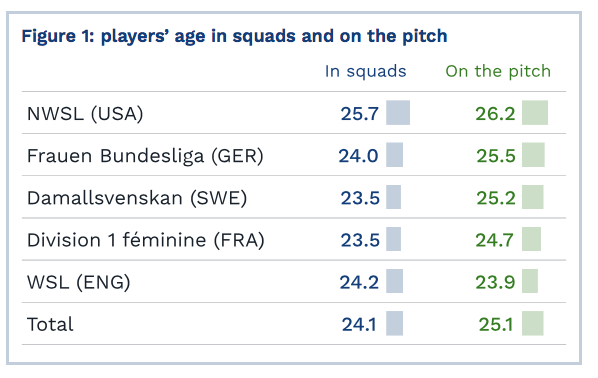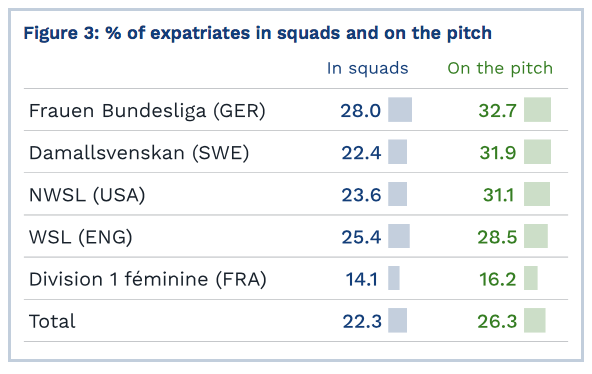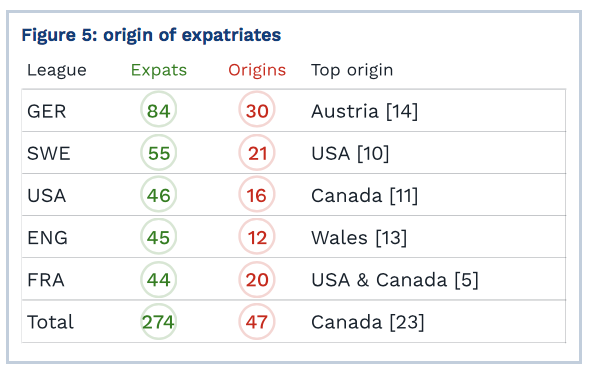By Paul Nicholson
June 9 – The CIES Football Observatory have taken a step away from their number crunching analysis of the Big 5 men’s leagues in Europe to examine the composition of playing squads in the four most developed women’s league in Europe (Germany, Sweden, France and England), as well as the Women’s National Soccer League in the United States.
The analysis finds a pattern increasingly mirroring the internationalisation of the men’s game with a growing international movement of players between countries and leagues.
“On the 1st June 2017, 274 footballers were expatriated in the 55 clubs analysed (5.1 per team). Only 5 clubs out of 55 did not field expatriate players. Conversely, expatriates played a majority of minutes in five teams: SC Sand, Bayern Munich and Wolfsburg in Germany, as well as Rosengård and Vittsjö in Sweden,” say the report authors.
They also find that the most successful teams are those with the highest numbers of international players. The all-star Champions League winners Olympique Lyonnais saw 97.7% of the team’s minutes played by internationals while at Germany’s Wolfsburg that figure was 97.4%. Full internationals also played more than 80% of match minutes at Rosengård, Bayern Munich, Paris St-Germain and Eskilstuna United.
However, the CIES issue a warning over the direction of the growth saying that “the increase in the means at the disposal of the wealthiest clubs poses a problem in terms of competitive balance.” The entrance of the big men’s teams with more money to spend into the women’s game is impacting on smaller women’s clubs who have been the groundbase of the women’s game.
The authors suggest an international league may be one way to address inequalities between teams. This would enable players to compete at a consistently higher level and improve the commercial funding opportunities for the top teams and players.
But they emphasise this “should not in any case take place without the putting into place of just and even-handed mechanisms to compensate local teams who are active in the training of young players. The governing bodies must ensure that the sporting and economic development of women’s football is not at the expense of the multiple actors having historically worked, and often struggled, so that the women’s game could progress and reach its current level.”
Source: CIES Football Observatory
Read the full report at http://www.football-observatory.com/IMG/sites/mr/mr26/en/
Contact the writer of this story at moc.l1751745997labto1751745997ofdlr1751745997owedi1751745997sni@n1751745997osloh1751745997cin.l1751745997uap1751745997




